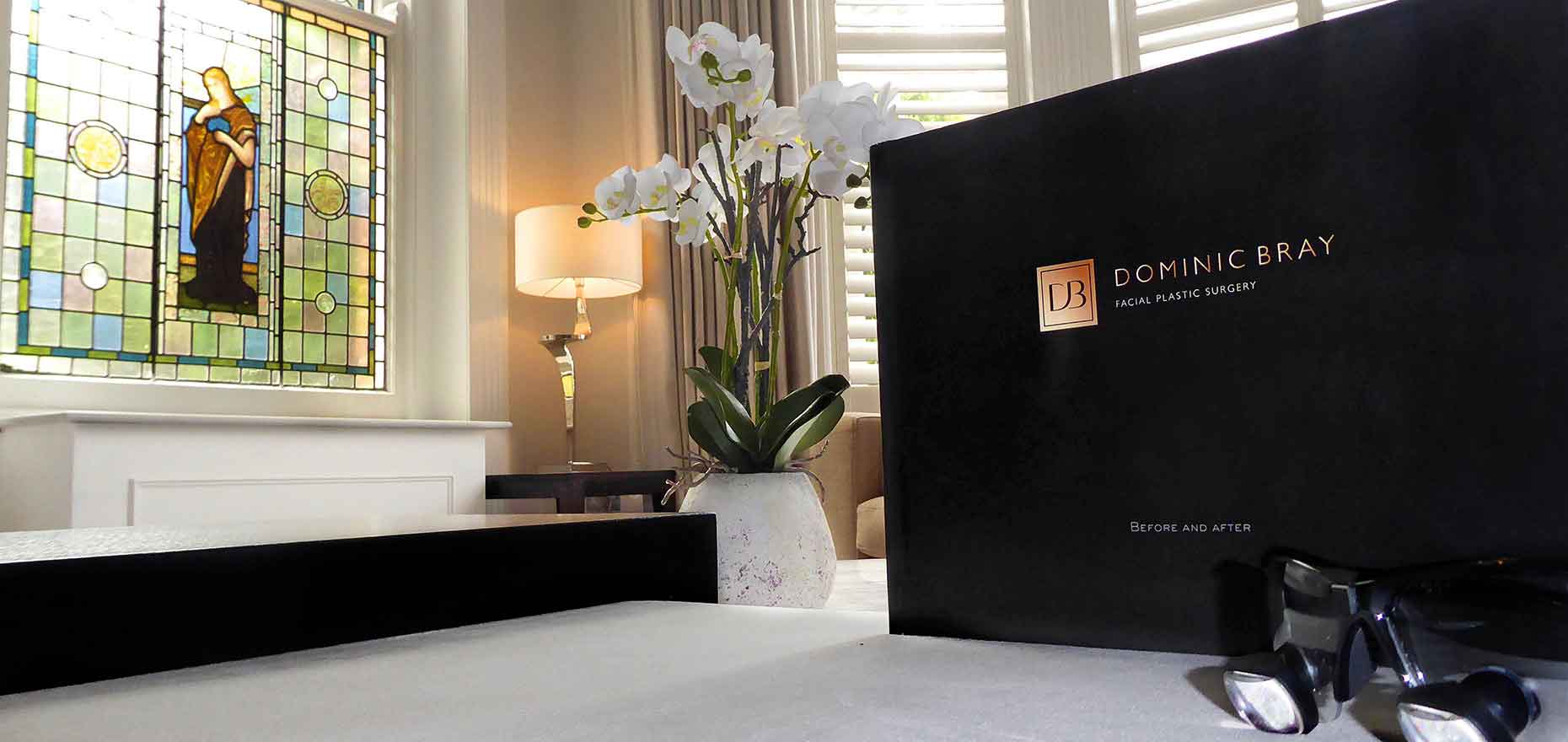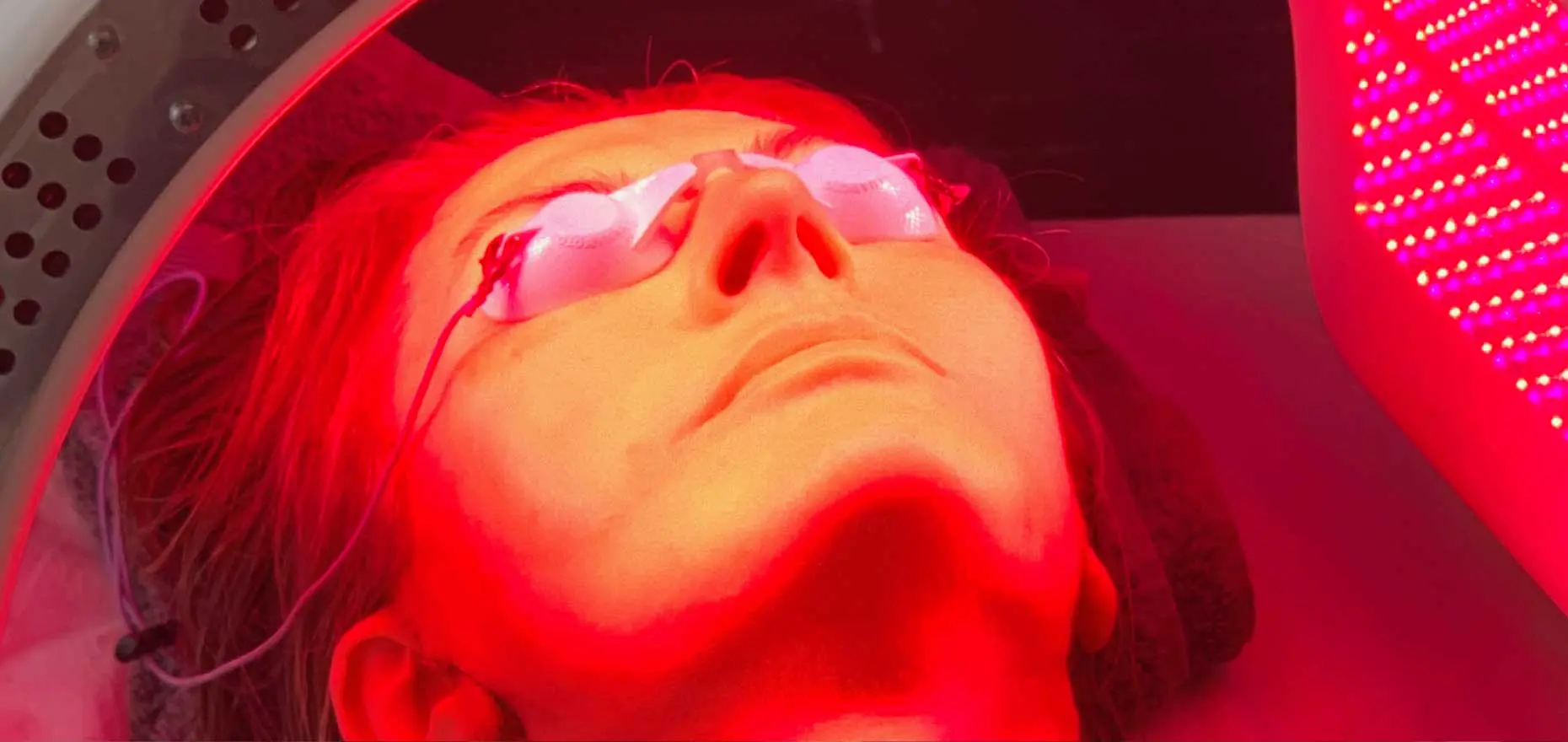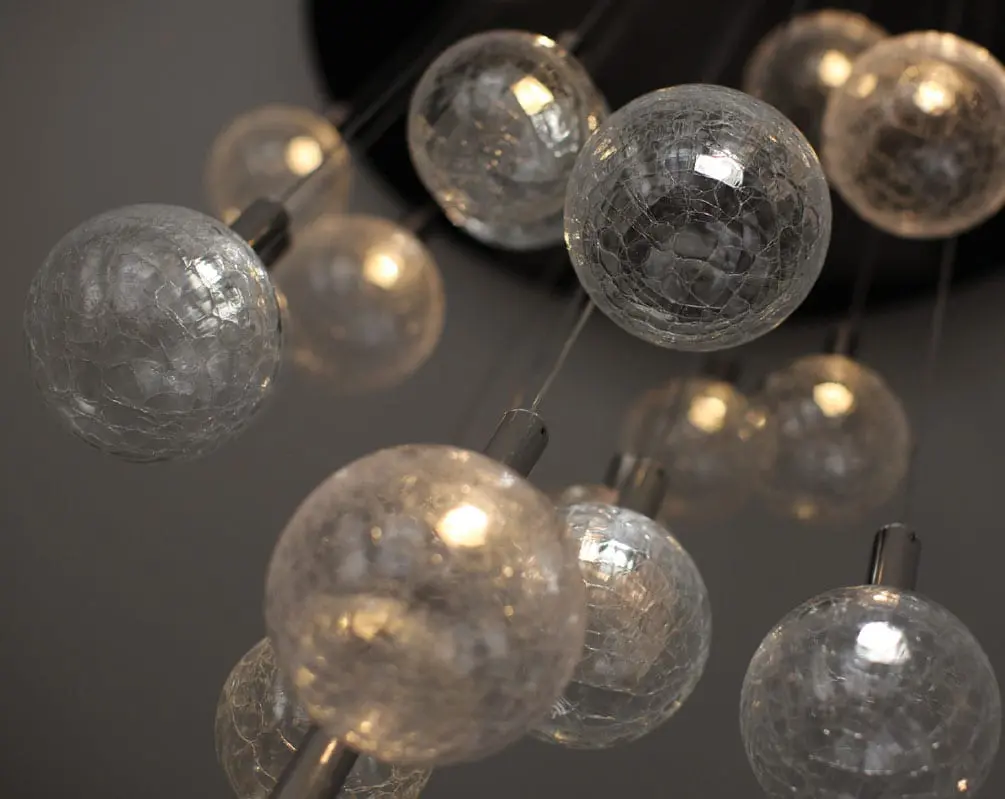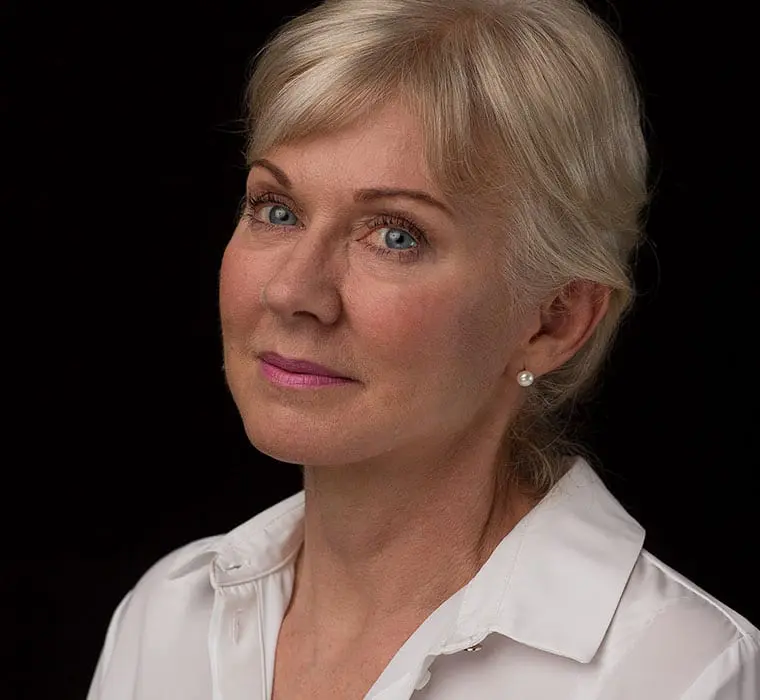
Facial Contouring
At a glance
Indications
Facial deflation and/or underdevelopment, facial fullness and contour blunting
Anaesthesia
Local anaesthetic
Technique
Fat Transfer, Chin implant, Buccal fat reduction, facial microliposuction
Overnight Stay
Daycase
Removal of Stitches
1 week if used
Return to work
2 weeks
Normal exercise
4 weeks
Healed result
12 weeks

Consultation
Recent years have seen huge advancements in our understanding of the facial ageing process. Whilst descent of the mid face and brow certainly plays a huge role, there is also a deflation in total facial soft tissue volume and development of stubborn fat deposits in the lower third and jowls.
I expand further here. Some advocate solely replacing this volume to rejuvenate the face whilst others rely on facelifting alone. My approach is to do both, lift native volume back to where it should be if descended and then add additional volume to the mid face, orbit and brow (with dermal filler or fat) and/or remove fat deposits from the jaw, chin and jowls if necessary.

The initial facial contouring consultation in London is an opportunity for you to talk and me to listen. I like to understand what has led to my patients seeking advice on face contouring treatment. It is clear to me, contradictory to popular misconception, that the majority of patients seeking correction of signs of ageing with procedures like facial contouring are motivated by far more than just vanity. There is no doubt that for most of us, when we look our best, have renewed confidence and energy about every aspect of our lives. I believe all people have a natural beauty about them and it is my job to bring that out.

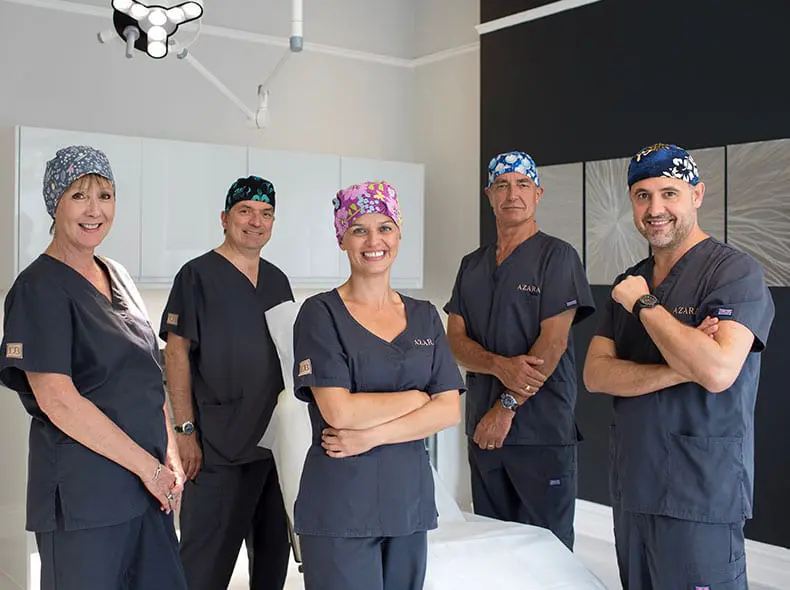
Techniques
The most important factor in assessing suitability for facial contouring procedures is hands on examination of the problem areas. After a thorough examination, I like to use photography so that we can collectively discuss and plan what might be achievable though facial contouring. Often the camera picks up shadowing and light that the eyes might miss. I also like to confirm that my prospective facial contouring patients’ weight is stable as changes in general body habitus does affect facial fat volume and visible contour.
Fat transfer
Taking fat from one part of the body and transferring it to another is not a new procedure, but until recently the results were not long-lasting or reliable. This is because the technique for transfer has been refined and the most effective anatomical donor sites have been identified.
When we take fat from one area and transplant it to another, that fat needs to grow blood vessels to survive. By harvesting and preparing the fat in a specific way and transplanted it as microdroplets, fat survival is now more predictable and reliable. Refinement of indications has also led to an improvement in longevity. Previously fat was used mainly in the lips and nasolabial folds (nose to mouth lines), we now know that the cheeks, orbits, temples and brow make the best donor sites.
Buccal fat removal
Fullness of the cheek and jowl can also be refined with removal of the buccal fat pad. This is a capsulated fat pad the size of a walnut that sits deep to the expression muscles of the face. A small incision is made under local anaesthetic in the mouth opposite the upper molars and the fat pad is teased out. Dissolvable stitches are used for closure and the incision heals beautifully.
Chin implants
The only implants I advocate and use in the face are chin implants. For patients with a weak or recessed chin they are excellent for creating a balanced profile and/or elongating the neck chin angle. These are easy to place under local anaesthetic through a small incision in the crease under the chin. Cheek implants carry the risk of infection as they are placed through incisions inside the mouth, and to my eye do not give a natural result. In my opinion, the advent of deeper and longer lasting injectable dermal fillers has rendered their use unnecessary.
Microliposuction
The most common sites that accumulate organised fat in the face are the jowls, jawline and under the chin. No amount of dieting will remove these so surgical techniques have been developed to reduce their prominence. Fat can be removed manually, or assisted with powered suction, ultrasound and/or Laser. I have used all modalities but prefer manual micro-liposuction in the face as it is exact, the suction pressure is softer and can be personally tailored.

Procedure
All facial contouring procedures are performed as local anaesthetic day case surgery in our CQC registered independent Hospital Azara. On the day of treatment patients check in and are changed into a gown before being escorted by our nurses to our surgical suite.
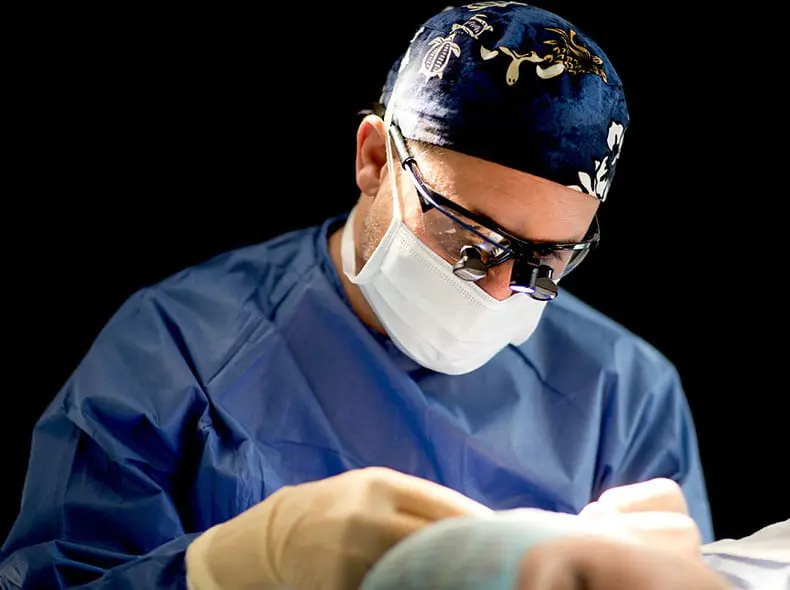


Recovery
My patients literally walk out of the operating theatre into the recovery room and are back home (if local) or at the hotel within an hour accompanied by a family member or friend. Facial contouring surgery by definition does cause initial swelling which is transient lasting a few days but is rarely painful. With all techniques the final result doesn’t become apparent for a few months as contours contract and settle. Most patients can return to work when the swelling and bruising subsides which may be up to 2 weeks.

Aftercare
In the days after facial contouring treatment, the operated area can be swollen, pain is not expected and any temporary discomfort is easily managed with paracetamol. Ice packs are useful for swelling. My team are in constant contact with my patients and review them regularly. This is an essential part of my practice and ensures that my patients feel confident, reassured and comfortable during their initial post operative recovery.
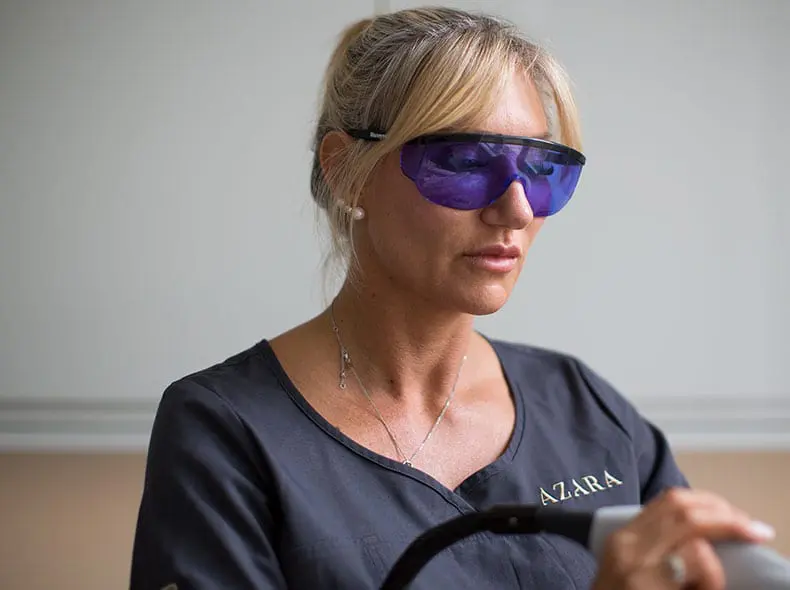


Longevity
The contour refinements achieved are permanent if body weight doesn’t radically change. The process of ageing continues however along with associated deflation and descent
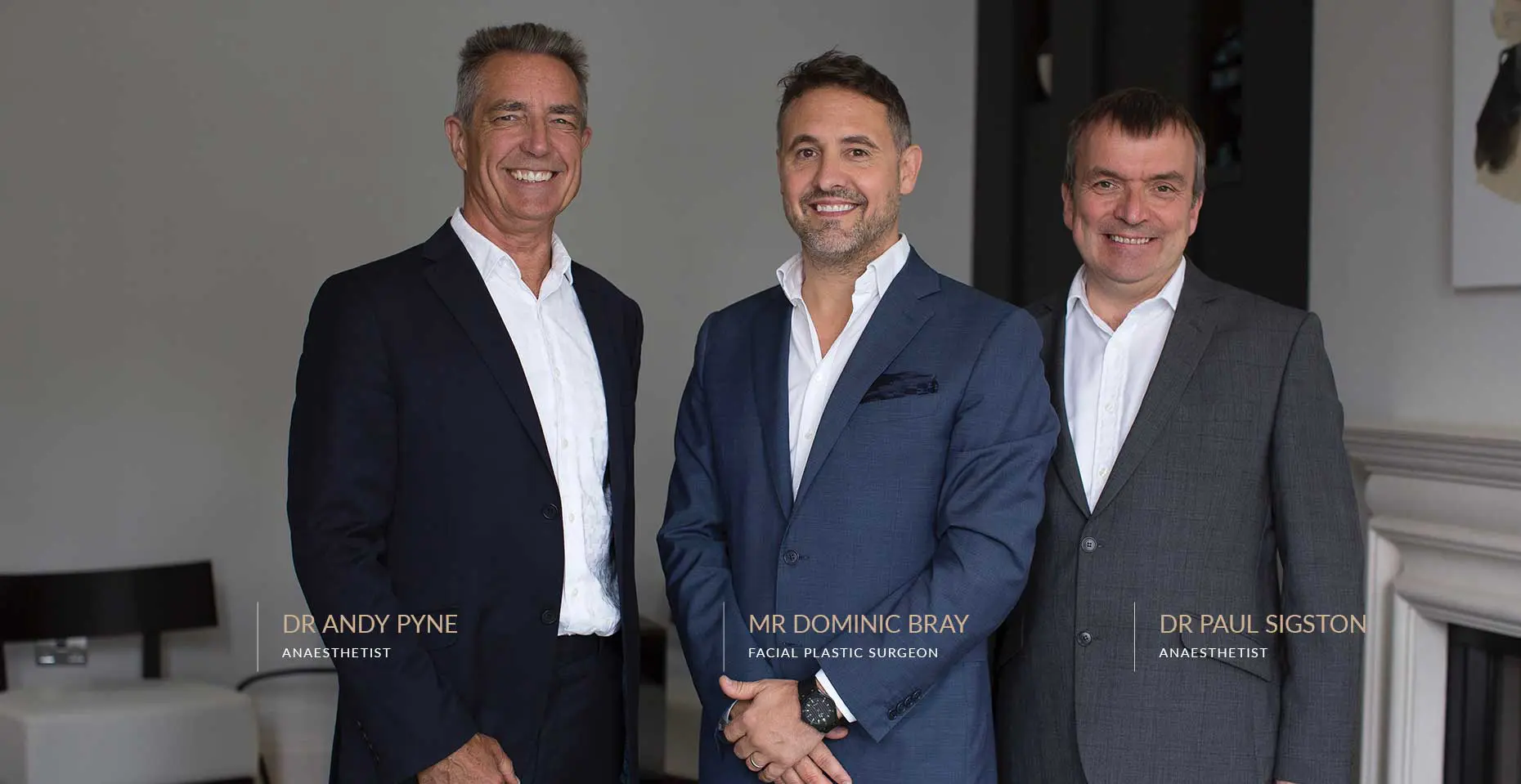

Risks and Complications
No surgery is without risk, these risks are however minimised by careful patient selection, adherence to preoperative guidance and conscientious post operative care.
The more common complications below are listed and the list is not meant to be exhaustive.
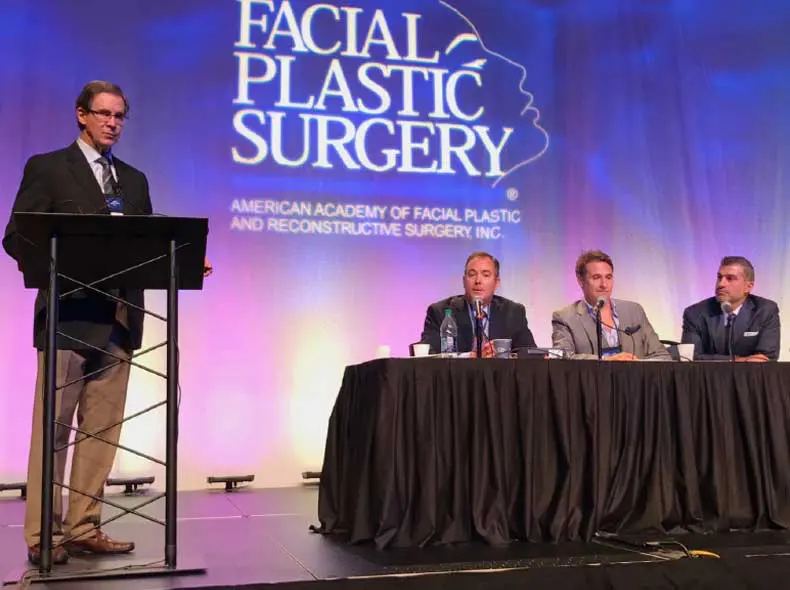
Bleeding
Where tissues are dissected there can be bleeding from small capillaries that create an expanding blood clot (haematoma), if treated promptly – this has no reflection on the final outcome other than prolonged bruising.
Poor scarring
All incisions create wounds which heal to a very fine and barely visible scar in almost all patients. Some patients have a predisposition to poorer scarring which can be Raised (hypertrophic),Wider (keloid) or White (hypopigmented)
Infection
I prescribe prophylactic antibiotics routinely and It is not uncommon to need to use a topical antiseptic ointment on wounds to keep them clean, but true infection is very rare.
Nerve weakness
Temporary weakness of the muscles that move the lip, mouth or brow might occur, usually due to stretching, swelling and tissue dissection
Poor fat transfer take
As a live graft fat take can be unpredictable. Overcorrection is necessary to account for this but unpredictibility can lead to asymmetry, lumps and/or under correction
Delayed healing (0.2%)
When skin is elevated, the blood supply to the skin is temporarily compromised. In patients with already compromised blood flow: smokers, revision cases, areas of skin might scab and heal slowly (necrosis)
Implant migration / rejection
Silastic chin implants are a sterile foreign body. Rarely, usually due to infection, implants can become inflamed and need removal.

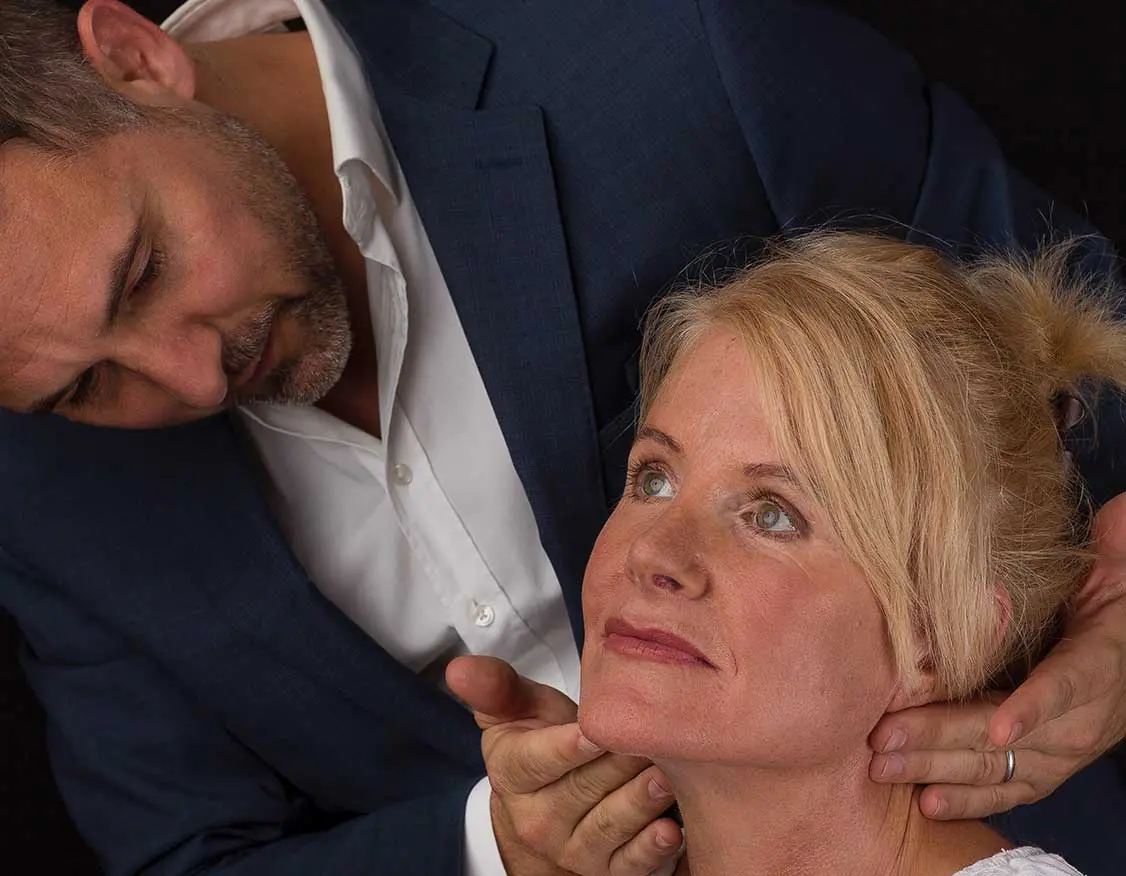
Considering
Facelift Surgery?
The definitive guide to anyone considering facelift and neck lift surgery at our London or Tunbridge Wells locations. Essential research for potential patients.
Read this first